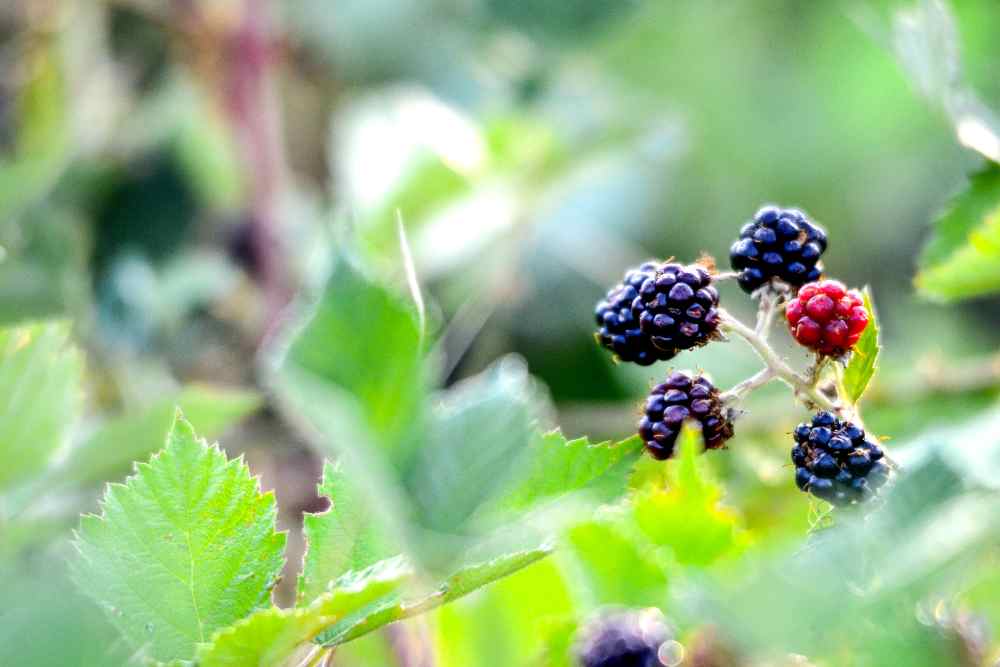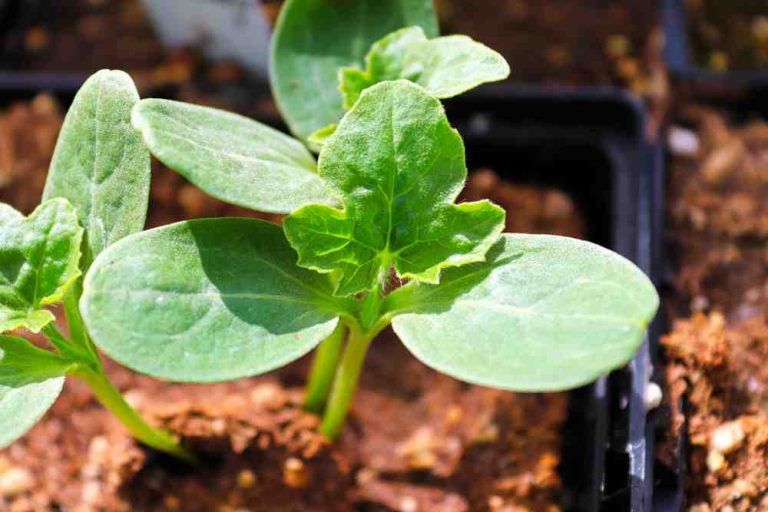A Guide to Growing Blackberries in Your Home Garden
Brambles (caneberries) are fruits in the Rubus genus including blackberries, raspberries (red and black), loganberries, boysenberries, and other hybrids.
Have you ever come across a thicket of wild berries bursting at the seams with hundreds of luscious, juicy berries? It’s as if you’ve discovered paradise. You don’t have to wait for a chance to meet with wild fruit.
Blackberries are an ideal home landscaping fruit plant since they are easy to cultivate in small spaces and produce tasty fruit in the spring, summer, and fall. Imagine being able to enjoy these fresh, tasty fruits just by walking into your garden.
There are three types of blackberries:
- Erect thorny blackberries
- Erect thornless blackberries
- Trailing thornless blackberries
Erect blackberries are self-supporting plants, whereas trailing blackberries have long canes that must be supported by trellises. All blackberries are perennial, meaning their root survive year after year.
The top of the plant above the soil is referred to as a biennial. This implies the canes will grow vegetatively for a year, then bear fruit the following year before dying. Every year, the plant sends up new canes to replace those that have died! Therefore pruning is necessary for harvesting good fruit and avoiding messy plants.
Benefits of Growing Blackberry
Blackberries are a delicious fruit that can be eaten raw or cooked into desserts such as pies. Vitamins A, C, and K and minerals including potassium, magnesium, and copper are found in the fruit. Dietary fiber is also found in blackberries. The blossoms of the blackberry attract a lot of bees and other pollinators to your yard. It will also attract birds, not just those who want to eat your berries, but also those who will help consume pest insects, such as wrens.
Site Preparation
A year before planting, prepare an easy-to-access site for your blackberries. Blackberries require full sun and a lot of space to grow. The soil should be a sandy loam that drains properly. Under non-irrigated situations, high-organic-matter soil is favorable. Establish the plants in a raised bed if the soil is not properly drained.
When to Plant Blackberries
Plant in the early spring, when the canes remain dormant. Planting can also be done in the late fall, but in very cold places, it should be postponed until early spring because low temperatures can damage some hybrid varieties. Because blackberries and their hybrids are all self-fertile, they don’t require many plants to produce fruit.
Planting
For blackberries, as for any other crop, a well-prepared plant-soil bed is needed. By adding organic matter and a small quantity of nitrogen to the soil, deep plowing and turning under one or two cover crops before planting improves the physical state of the soil. Before planting, kill any annual and perennial weeds in the planting row.
This can be accomplished with herbicides or by cultivating in dry soils repeatedly. To minimize erosion and make the middles firmer during rainy periods, the middles between the rows can be kept clean or covered with mown grass. Blackberries can be planted in a hedge pattern on 6-feet apart rows in the home garden.

To make cultural activities more convenient, commercial growers should space rows 10 to 12 feet apart. Within the row, space root cuttings 2 feet apart and allow them to develop in a hedge-like way. The best time for planting is in February.
Thornless varieties should be planted 2 feet apart and planted as plants. Planting more vigorous thorny varieties at 3-foot intervals is possible. Root cuttings should be planted 3 inches deep. Cuttings are placed flat in a trench that has been opened and covered with soil. Irrigate as needed, but don’t let the soil dry up.
When using plants, cut the canes back to 6 inches. This 6-inch top will make handling easier and will also serve as a marker for the plants’ location. If planting stock cannot be transplanted immediately, cover it with sawdust to prevent them from drying out.
Mulching
Mulch can suppress annual weeds, maintain soil moisture, and give nutrients depending on the type of mulch used. Avoid burying the crown in organic mulch, since this may encourage rotting. During the growth season, deep straw should not be used as a mulch since it can encourage greater vole or rodent activity, which can harm the plants. If you live in a region where the soil freezes and thaws during the winter, causing heaving, mulch around the crown of your plants to shield them from the cold.
Weed
To enhance yields and reduce harvesting issues, weed control is required. If there are perennial weeds in the planting area, they should be eradicated before planting, especially native dewberries, which can carry diseases and are difficult to eradicate subsequently.
The year before planting berries, they may be sprayed with glyphosate. Weed growth can be slowed by using hay or rotting wood chip mulch. Commercial producers can use preemergent herbicides. To help with weed control, some growers have utilized black plastic or nylon weed barrier fabrics.
Fertilizer
Fertilize your blackberries with a balanced 10-10-10 formula in the spring as they are emerging from dormancy. Fertilize plants once more in the fall with a manure and compost application, which will also help to suppress weeds and enhance soil tilth.
Irrigation
New plantings and mature-bearing plants both require additional watering. Drip irrigation lines can be buried at the time of planting, laid on top of the ground next to the plants and mulched, or tied to trellis wires. Irrigation should begin in March or April and be reduced by September to slow new growth and allow the canes to harden. During drought years, repeated winter irrigations may be required.
How to Harvest Blackberries
Pick Only Fully Blackberries
The mature berries are large but firm, with a deep black color and a tendency to pull effortlessly from the vine without yanking. After being harvested, berries do not ripen.

Insects and Diseases
A variety of insects and diseases can harm blackberries. The first way to solve any problem is to know what to look for. On young canes and spurs, anthracnose can cause little purplish patches. These patches expand, becoming round and sunken in shape.
They have raised borders and gray centers. Anthracnose is best handled by removing and killing all canes during spring pruning if the plantation is severely affected. When the flower buds begin to open and until the end of flowering, use a fungicide designated for blackberries every two weeks.
Sap beetles may cause havoc on ripening fruit. Pick all ripe berries as soon as possible for the finest control. Put out overripe muskmelon to catch beetles. Traps should be placed close, but not in, the planting. Cane borers, such as the larvae of the long-horned beetle, can tunnel inside stems.
Adult beetles are dark in color with yellow or orange markings. The female beetle girdles the stem near the tip of the cane with two puncture wounds in June. Cut the wilted tips back to a few inches below the girdle and destroy the prunings.
Phytophthora root rot and verticillium wilt are caused by fungi that live in the soil and grow in wet conditions, and poorly drained environments, thus excellent drainage is essential. Verticillium wilt causes yellowing of the leaves, which begins at the bottom of the canes and progresses upward.
Canes that have been infected become stunted and finally die. Dark, water-soaked regions of discoloration at the base of the cane are indicators of Phytophthora root rot.
The leaves of the plant will eventually turn yellow and die. Dig up and destroy infected plants, including roots. Blackberries are also susceptible to orange rust. The undersides of the leaves are covered with bright orange fungal growth in the spring. Plants that are infected will have to be dug out and destroyed.
- 20+ Chic Boho Bedroom Ideas for a Cozy and Stylish Retreat - June 20, 2024
- 12+ Modern Boho Living Room Ideas to Create a Unique Oasis - June 10, 2024
- 10 Stunning Canopy Bed Ideas for a Dreamy Escape - May 16, 2024


